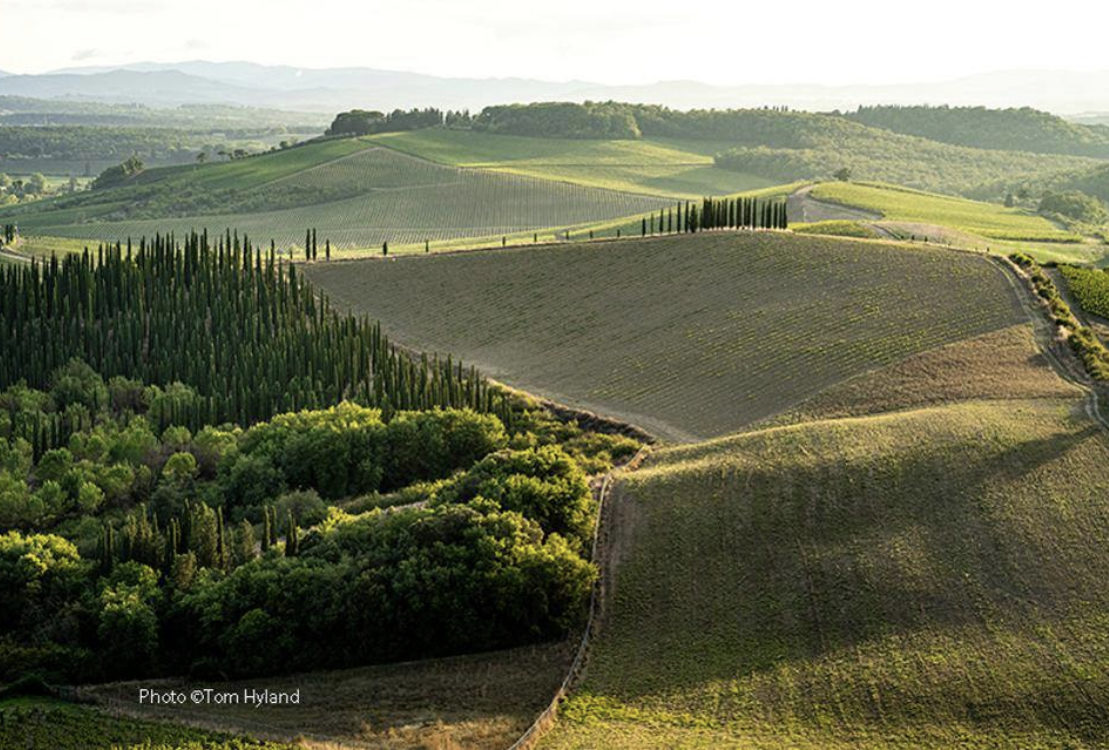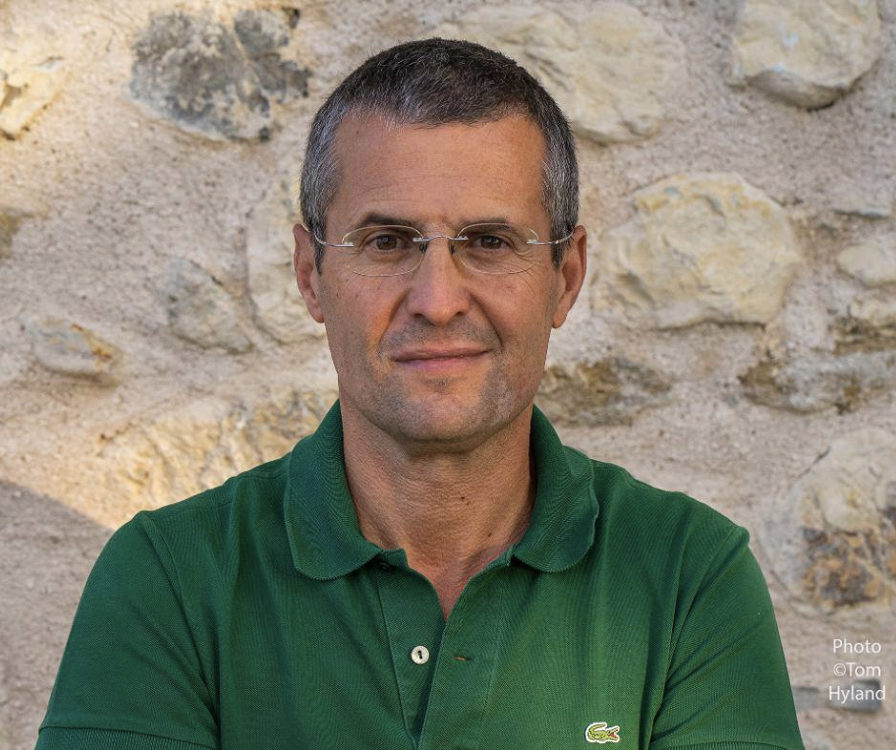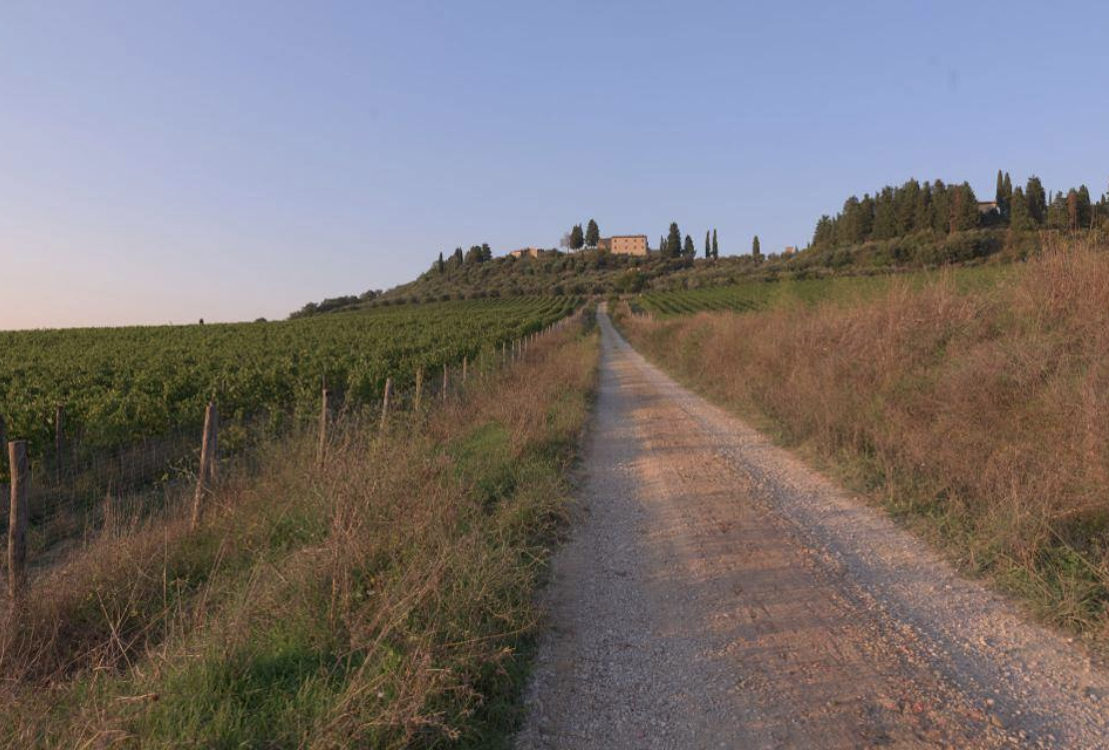Bibbiano – A Great Chianti Classico Producer
There are so many renowned wine estates in Chianti Classico, ranging in production from a few thousand to several million bottles. One of my favorite producers for many years has been Tenuta di Bibbiano, the property of the Marrocchesi Marzi family; today fifth-generation brothers Tommaso and Federico manage the estate, located in Castellina in Chianti.
The estate itself is quite beautiful, comprising 30 hectares (about 75 acres) set on rolling countryside. Sangiovese is of course, the primary varietal planted here, with other grapes including Canaiolo, Malvasia Nera, Colorino, Ciliegiolo as well as small amounts of white varieties, Trebbiano, Grechetto and Malvasia di Chianti. Soils, dating back to the Pliocene epoch, are clay in nature with typical local Alberese rock.
There is a grace and charm to the red wines of Bibbiano; certainly there is ideal ripeness in most years, but the philosophy here is based on finesse over power, with exemplary varietal character, which emerges from fermentation in cement tanks and not wood, for most of the wines. The wines are then matured in a variety of containers, ranging from cement tanks, as with the Chianti Classico annata, to large and mid-sized oak casks for the Chianti Classico riserva and the Gran Selezione offerings.
Tommaso Marrocchesi Marzi seeks to convey a natural sense of balance and harmony to his wines, as well as a sense of place. What, in his opinion, makes Castellina in Chianti, located in the western reaches of Chianti Classico, such a special place for growing Sangiovese? “The district of Castellina in Chianti is paradigmatic of the style & terroir variety of the appellation,” he explains. “It has altitudes varying from 250 meters to 600 meters (820 to 1960 feet) above sea level and lays on two slopes, the highest and eastern based on primary boulder platforms; the lowest and western on silt sediments. The district has big and small producers, old estates, new properties, vignerons.
“These factors all together are like a full example of the appellation, but among the differences in the winemaking styles there is a common characteristic of the wines of the district: fine elegance.”
Current releases of Bibbiano wines are primarily from the 2015 and 2016 vintages, two notable, perhaps outstanding, back-to-back vintages. How does he describe the differences in these two years? “In 2015 winter was relatively mild, while summer was hot but ventilated, and fresher after mid-August rains. 2015 is an excellent vintage. However 2016 is perfect: cold winter, flourishing spring, hot summer but timely showers in July. The wines reflect those differences; generally speaking the 2015s are more tannic and will need more time to properly express their complexity. Paradoxically the 2016s will be ready earlier.”
One final note on the wines of Bibbiano. For several decades, the winemaker was Giulio Gambelli, one of Tuscany’s most loved enologists. Gambelli, a native of the nearby town of Poggibonsi, was not a technical enologist in strict terms, but someone who made his decisions by taste and feel; he was dubbed “The Man who Could Listen to Wine” by numerous individuals who studied Tuscan wines, including journalist Carlo Macchi, who authored a book about Gambelli with that title. Gambelli passed away in 2012, and today the winemaking at Bibbiano is a constant reminder of Gambelli’s influence and philosophy, one in which grace and charm were and continue to be key ingredients.
2018 Listrice (Toscana IGT) – A blend of 60% Malvasia Bianca del Chianti and 40% Trebbiano. Inviting aromas of candied pear, jasmine and red apple. Medium-bodied, this has very good acidity and balance with a lengthy finish. Quite tasty, enjoy this now and over the next 2-3 years. Very Good
2017 Chianti Classico – 100% Sangiovese. Aromas of morel cherry, marjoram and red flowers. Medium-bodied, this is nicely balanced with very good complexity, rich tannins and balanced acidity. Enjoy over the next 3-5 years. Very Good. Available @ K&M Gutsweine
2016 Chianti Classico Riserva – 100% Sangiovese. Aromas of morel cherry, red plum and thyme. Medium-full with very good concentration. Good acidity, subdued wood notes, medium-full tannins, impressive complexity and notable persistence; nice varietal character. Peak in 7-10 years. Excellent. Available @ K&M Gutsweine
2015 Chianti Classico Gran Selezione “Vigna di Montornello” – 100% Sangiovese. Aromas of morel cherry, tobacco, blueberry and china bark. Medium-full, this has a rich, almost chewy mid-palate, good acidity, ample wood notes and an earthy finish. Medium-weight tannins and impressive complexity. This needs plenty of time. Best in 10-12 years. Excellent. Available @ K&M Gutsweine

The landscape at Bibbiano PHOTO ©TOM HYLAND
2016 Chianti Classico Gran Selezione “Vigna del Capannino” – 100% Sangiovese Grosso – clone of the Capannino vineyard. Aromas of morel cherry, a hint of tobacco, thyme, and red flowers. Medium-full with excellent concentration, rich mid-palate, good acidity, excellent persistence, lovely harmony. Medium-full tannins, notable complexity, lovely breeding and varietal character. Rich, complete Chianti Classico that is beautifully structured. Peak in 12-15 years. Outstanding
2015 Bibbianaccio (IGT Toscana) – A blend of red and white grapes from the Bibbiano estate, comprising 50% Sangiovese, 45% Colorino, with the remaining 5% consisting of Malvasia Bianca del Chianti and Trebbiano. Aromas of mocha, morel cherry and oregano. Medium-full with very good to excellent concentration. Good acidity, excellent persistence, good acidity; subtle notes of brown herbs in the finish. Give time – best in 7-10 years. Excellent
Text & Fotos © Tom Hyland


